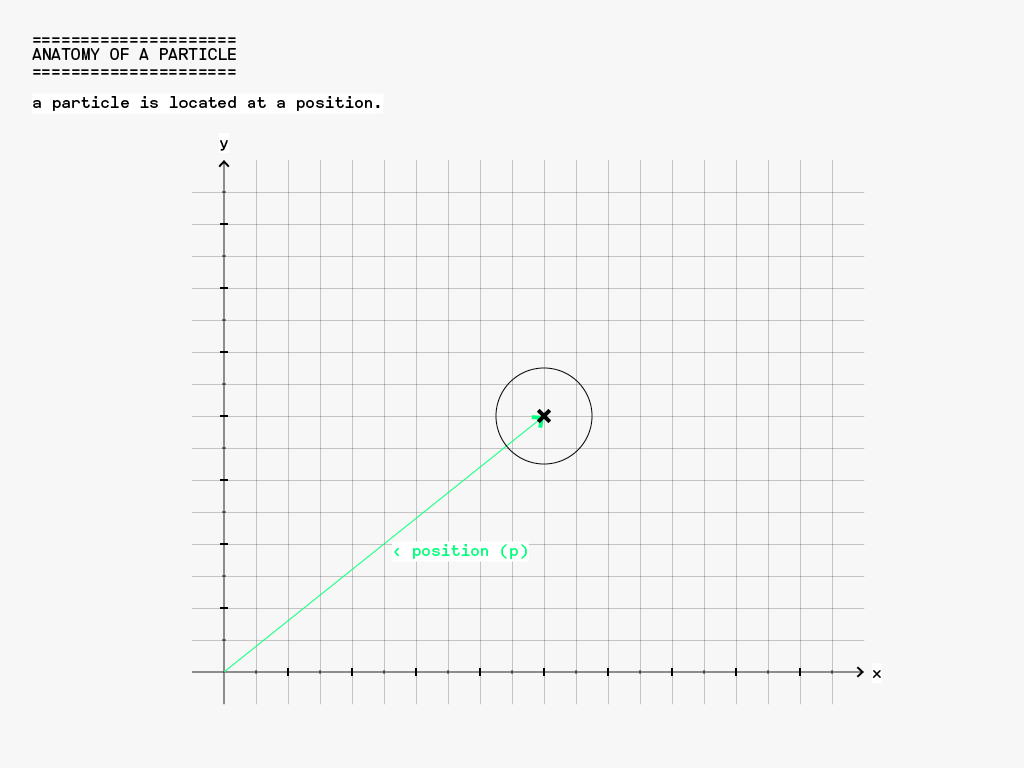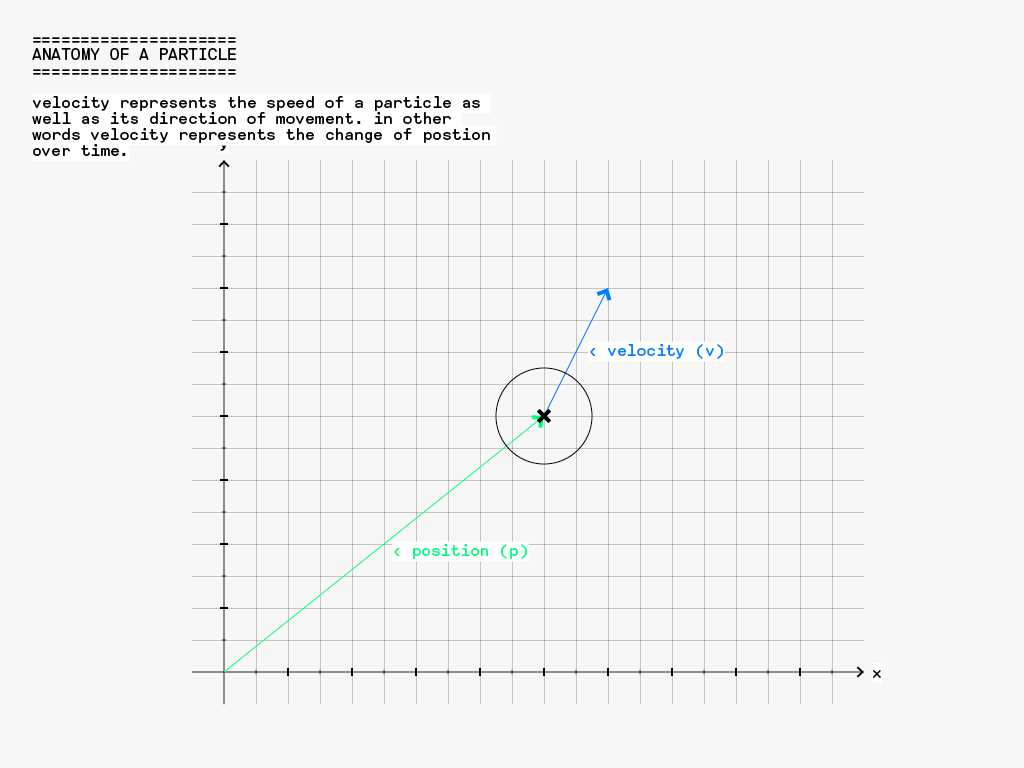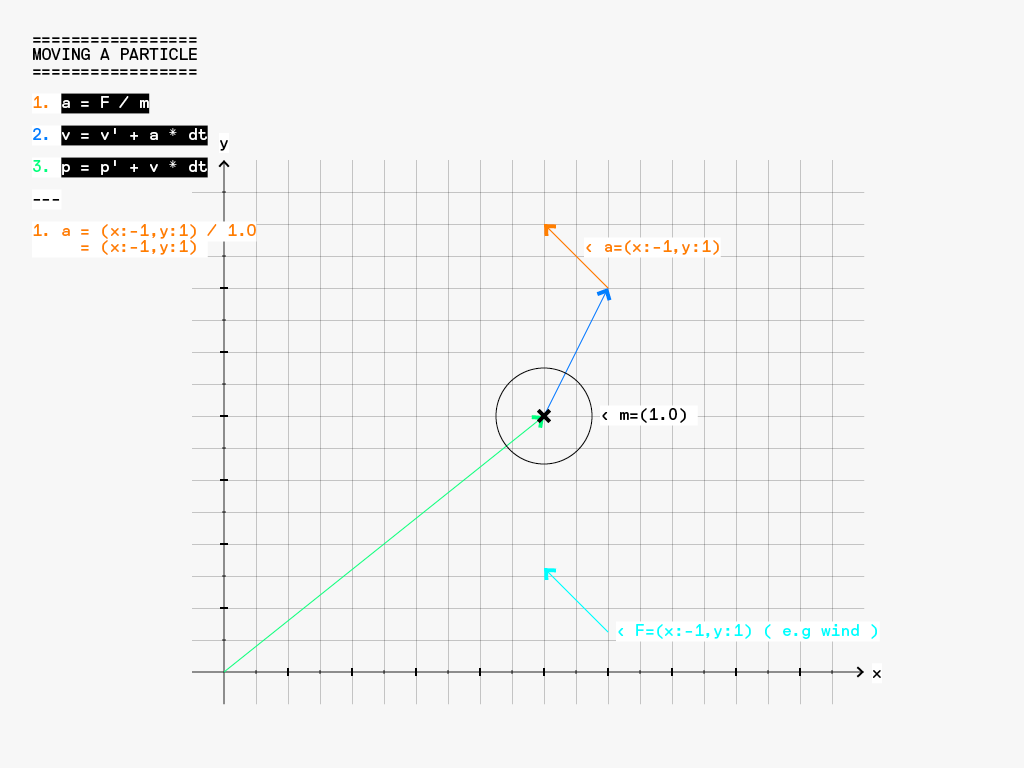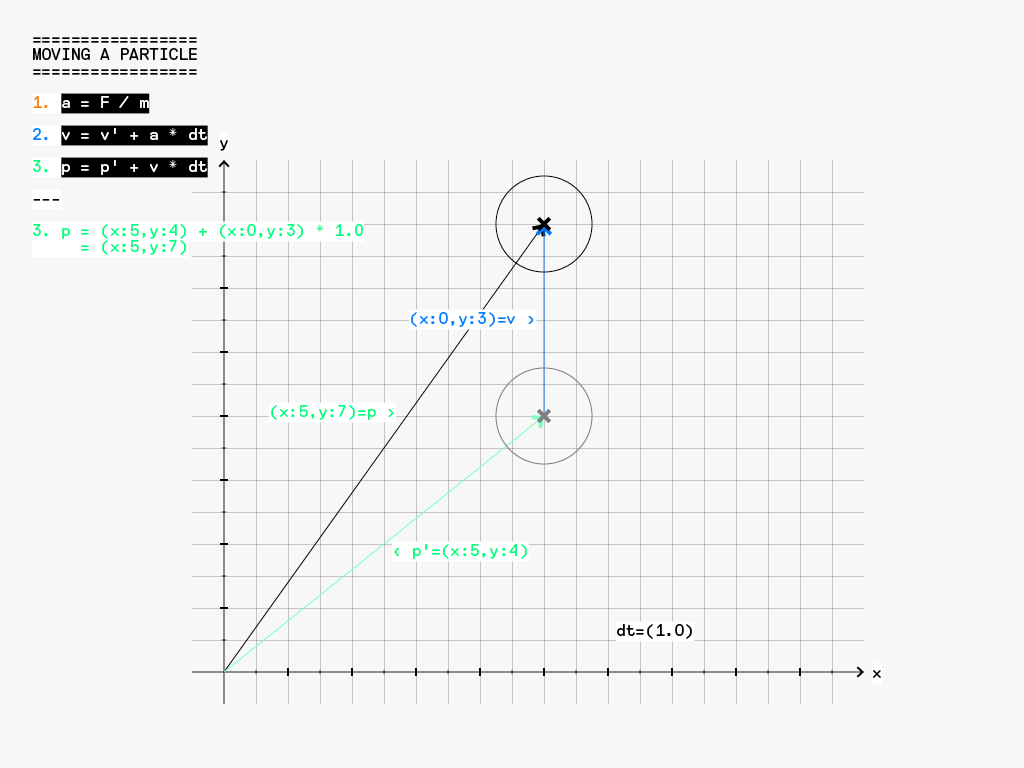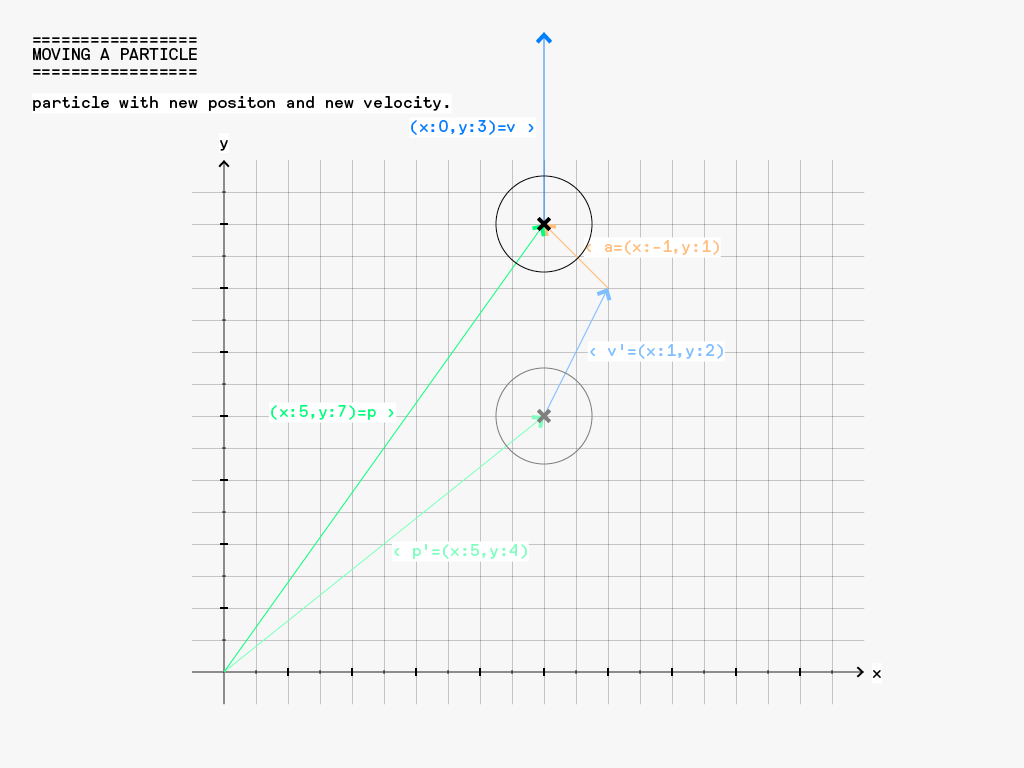teilchen
- teilchen is a simple physics library based on particles, forces, constraints and behaviors.
- teilchen is also a collection of a variety of concepts useful for modeling with virtual physics and behaviors. nothing new, nothing fancy, except maybe for the combination of forces ( external forces ) and behavior ( internal forces ).
- teilchen is also a processing.org-style library.
- teilchen is a german word and a synonym for Partikel which translates to the english particle.
the library is hosted on github teilchen.
anatomy of a physic-based particle system
particles
there are a few different kinds of particles. the most simple particle has just a handful of properties like position, velocity, acceleration, mass, and radius. other particles have additional properties like a limited lifetime or individual behaviors.
forces
forces act on particles ( or rather on their acceleration ). one of the most obvious forces is Gravity which pulls particles into a specific direction. but there are all kinds of other forces too like Attractor or TriangleDeflector. some forces affect all particles in a system, while others only act on specific particles. one prominent example of the latter is the Spring that tries to maintain a fixed distance between two particles.
behaviors
a behavior is a special kind of force. it is an internal force moving the particle from within and it affects a single particle only. an common example of a behavior is a Motor which drives a particle into a specific direction. another example is the Seek behavior which constantly drives a particle towards a certain position.
constraints
constraints act on particle positions outside of a physical simulation. constraints manipulate the particles’ positions to satifsy specific constraints like for example keeping an equal distance between two particles or keeping particles within a volume. although constraints might seem similar to forces, it is important to know that forces can only accelerate particles while contraints directly teleport particles which as a rule of thumb is more effective but less realistic.
integrators
integrators are used to integrate acceleration and velocity to calculate the new position. the most well-known is the euler integrator, but there are also optimized versions like runge-kutta or midpoint or even slightly different concepts like verlet. integrators can affect the precision and stability of a particle simulation.


